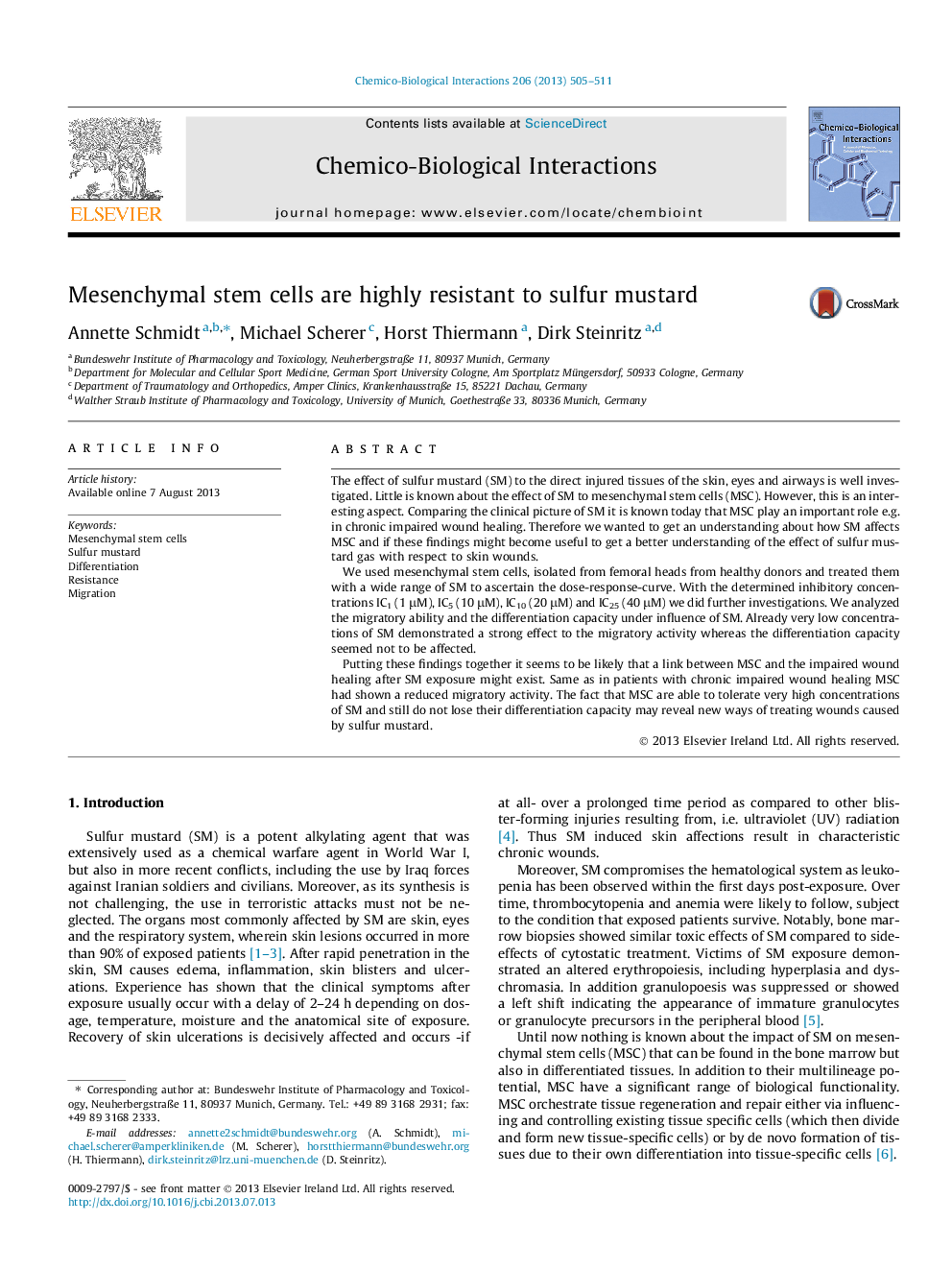| Article ID | Journal | Published Year | Pages | File Type |
|---|---|---|---|---|
| 2580571 | Chemico-Biological Interactions | 2013 | 7 Pages |
•First paper describing effect of S-Lost to mesenchymal stem cells (MSC).•MSC are high resistant to S-Lost.•MSC keep their ability to differentiate after exposure of S-Lost.•MSC show significant decrease of migratory activity also after low dose S-Lost exposure.
The effect of sulfur mustard (SM) to the direct injured tissues of the skin, eyes and airways is well investigated. Little is known about the effect of SM to mesenchymal stem cells (MSC). However, this is an interesting aspect. Comparing the clinical picture of SM it is known today that MSC play an important role e.g. in chronic impaired wound healing. Therefore we wanted to get an understanding about how SM affects MSC and if these findings might become useful to get a better understanding of the effect of sulfur mustard gas with respect to skin wounds.We used mesenchymal stem cells, isolated from femoral heads from healthy donors and treated them with a wide range of SM to ascertain the dose-response-curve. With the determined inhibitory concentrations IC1 (1 μM), IC5 (10 μM), IC10 (20 μM) and IC25 (40 μM) we did further investigations. We analyzed the migratory ability and the differentiation capacity under influence of SM. Already very low concentrations of SM demonstrated a strong effect to the migratory activity whereas the differentiation capacity seemed not to be affected.Putting these findings together it seems to be likely that a link between MSC and the impaired wound healing after SM exposure might exist. Same as in patients with chronic impaired wound healing MSC had shown a reduced migratory activity. The fact that MSC are able to tolerate very high concentrations of SM and still do not lose their differentiation capacity may reveal new ways of treating wounds caused by sulfur mustard.
